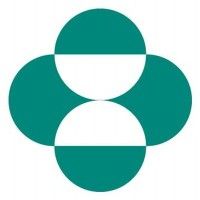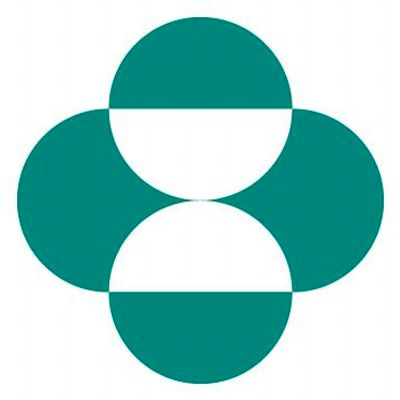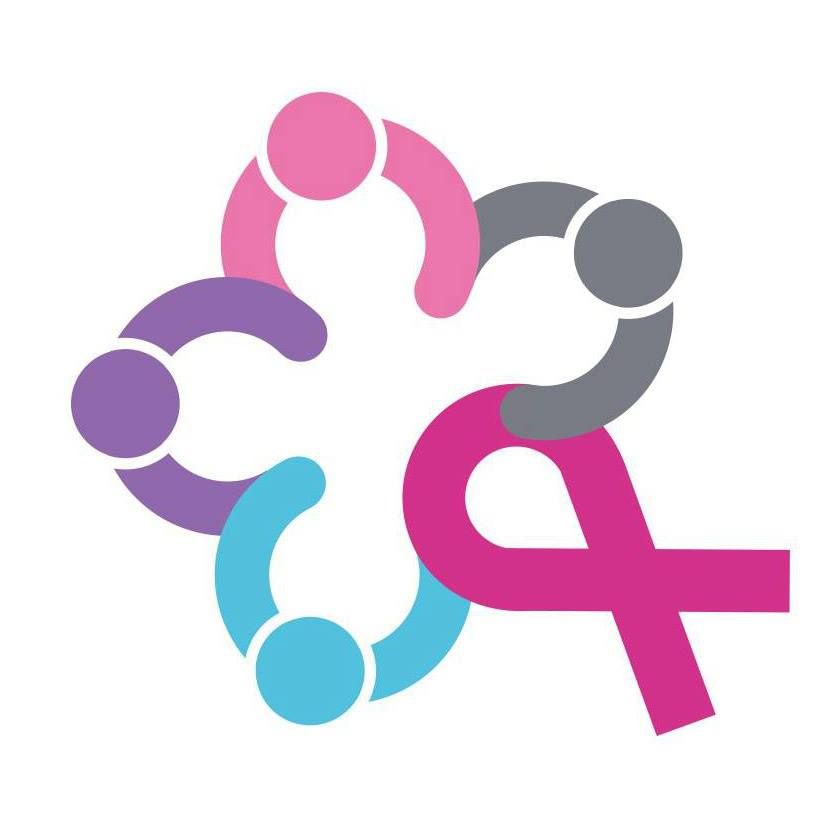预约演示
更新于:2026-01-09
Olaparib
奥拉帕利
更新于:2026-01-09
概要
基本信息
药物类型 小分子化药 |
别名 4-(3-{[4-(cyclopropylcarbonyl)piperazin-1-yl]carbonyl}-4-fluorobenzyl)phthalazin-1(2H)-one、Olaparib (JAN/USAN/INN)、奥拉帕尼 + [14] |
作用方式 抑制剂 |
作用机制 PARP1抑制剂(聚腺苷二磷酸核糖聚合酶1抑制剂)、PARP2抑制剂(聚腺苷二磷酸核糖聚合酶2抑制剂)、PARP3抑制剂(聚腺苷二磷酸核糖聚合酶3抑制剂) |
在研适应症 |
原研机构 |
最高研发阶段批准上市 |
首次获批日期 欧盟 (2014-12-16), |
最高研发阶段(中国)批准上市 |
特殊审评突破性疗法 (美国)、快速通道 (美国)、加速批准 (美国)、孤儿药 (美国)、优先审评 (中国)、特殊审批 (中国)、孤儿药 (日本)、优先审评 (澳大利亚)、加速批准 (加拿大)、优先审评 (美国)、附条件批准 (中国) |
登录后查看时间轴
结构/序列
分子式C24H23FN4O3 |
InChIKeyFDLYAMZZIXQODN-UHFFFAOYSA-N |
CAS号763113-22-0 |
关联
521
项与 奥拉帕利 相关的临床试验NCT05522491
An Open-label, Single-arm, Single-center Exploratory Clinical Study of Olaparib in the Treatment of BRCA1/2 Unmutated and BRCA1 Promoter Methylated Recurrent and Metastatic Triple-negative Breast Cancer
This is an open-label, single-arm, single-center,exploratory clinical study.
开始日期2026-09-01 |
申办/合作机构 |
NCT05128734
A Randomized Phase II Study of Temozolomide Monotherapy or in Combination With Olaparib in Patients With METHYLATED 06-Methylguanine-DNA Methyltransferase (MGMT) Pre-Treated Triple Negative Breast Cancer (TNBC)
This is a randomized phase II study to evaluate the disease control rate (DCR) of patients with metastatic or locally advanced METHYLATED 06-methylguanine-DNA methyltransferase (MGMT) with triple-negative breast cancer (TNBC) treated with Temozolomide ± Olaparib. Patients will be randomized 1:1 to Treatment Arm 1 (temozolomide treatment) or Arm 2 (temozolomide plus olaparib treatment).
开始日期2026-04-01 |
申办/合作机构 |
NCT07187674
Single Arm, Prospective, Small Sample, Exploratory Clinical Study on the Neoadjuvant Treatment of Early High-risk Triple Negative Breast Cancer With HRD Positive With Iparomlimab and Tuvonralimab(QL1706)Combined With Olaparib and Paclitaxel
Breast cancer is one of the most common malignant tumors in women, accounting for the first cancer-related death cause in women. In recent years, the incidence has gradually increased, and the trend is younger. In 2022, the estimated number of new cases of female breast cancer worldwide is 2.389 million, and the estimated number of deaths is 666000. Triple negative breast cancer (TNBC) refers to breast cancer that is negative for estrogen receptor, progesterone receptor and human epidermal growth factor receptor 2, accounting for about 10% - 20% of malignant breast tumors. . At present, chemotherapy is still the main means of clinical treatment of TNBC, but the heterogeneity of TNBC in molecular level, pathology and clinical characteristics leads to different sensitivity of patients to different chemotherapeutic drugs, especially the sensitivity of most elderly patients to chemotherapeutic drugs is not high, and the prognosis is poor.
The development of immunotherapy in the field of breast cancer has witnessed the continuous deepening of medical understanding of cancer treatment. In the past, breast cancer was often regarded as a "cold tumor" insensitive to immunotherapy, but with the deepening of research, immunotherapy gradually occupied an important position in the treatment of breast cancer. The ongoing research hopes to identify patients who may benefit more from immunotherapy according to their respective tumor immune microenvironment.
Its mechanism of action mainly includes two aspects: one is to restore the normal recognition and attack ability of the immune system to tumor cells and break the immune escape mechanism of tumor cells; The second is to stimulate a lasting immune response, so that the immune system can continuously monitor and clear tumor cells.
Therefore, this study intends to evaluate the efficacy and safety of Iparomlimab and tuvonralimab combined with olaparib and paclitaxel in the neoadjuvant treatment of early high-risk TNBC with HRD positive.
It is planned to enroll 20 subjects. After enrollment, the subjects will receive six cycles of combination therapy with olaparib and docetaxel. Take 3 weeks as a treatment cycle until the treatment termination event specified in the protocol occurs, and the subject will continue to conduct postoperative efficacy and safety visits after the end of treatment.
After neoadjuvant treatment, according to the routine treatment process of breast cancer, the subject will receive breast cancer surgery; After surgical treatment, according to the residual breast lesions of the patient, the attending physician and the subject will agree on the subsequent treatment plan.
The development of immunotherapy in the field of breast cancer has witnessed the continuous deepening of medical understanding of cancer treatment. In the past, breast cancer was often regarded as a "cold tumor" insensitive to immunotherapy, but with the deepening of research, immunotherapy gradually occupied an important position in the treatment of breast cancer. The ongoing research hopes to identify patients who may benefit more from immunotherapy according to their respective tumor immune microenvironment.
Its mechanism of action mainly includes two aspects: one is to restore the normal recognition and attack ability of the immune system to tumor cells and break the immune escape mechanism of tumor cells; The second is to stimulate a lasting immune response, so that the immune system can continuously monitor and clear tumor cells.
Therefore, this study intends to evaluate the efficacy and safety of Iparomlimab and tuvonralimab combined with olaparib and paclitaxel in the neoadjuvant treatment of early high-risk TNBC with HRD positive.
It is planned to enroll 20 subjects. After enrollment, the subjects will receive six cycles of combination therapy with olaparib and docetaxel. Take 3 weeks as a treatment cycle until the treatment termination event specified in the protocol occurs, and the subject will continue to conduct postoperative efficacy and safety visits after the end of treatment.
After neoadjuvant treatment, according to the routine treatment process of breast cancer, the subject will receive breast cancer surgery; After surgical treatment, according to the residual breast lesions of the patient, the attending physician and the subject will agree on the subsequent treatment plan.
开始日期2025-12-30 |
申办/合作机构 |
100 项与 奥拉帕利 相关的临床结果
登录后查看更多信息
100 项与 奥拉帕利 相关的转化医学
登录后查看更多信息
100 项与 奥拉帕利 相关的专利(医药)
登录后查看更多信息
3,879
项与 奥拉帕利 相关的文献(医药)2026-12-01·MOLECULAR BIOLOGY REPORTS
Targeting SRPK1 to regulate alternative splicing in prostate cancer: the roles of MALAT1 and TUG1
Article
作者: Basera, Afra ; Dlamini, Zodwa ; Alabi, Babatunde Adebola ; Gabada, Linomtha ; Marima, Rahaba
BACKGROUND:
Prostate cancer (PCa) is a leading cause of cancer-related mortality, with significant racial disparities in outcomes. Long non-coding RNAs (lncRNAs) MALAT1 and TUG1 are implicated in oncogenic pathways. Aberrant RNA splicing, a hallmark of cancer, is often driven by dysregulation of serine-arginine protein kinase 1 (SRPK1), a key spliceosome regulator. The relationship between lncRNAs of splicing factors in cancer pathways remains underexplored, and thus, this study aimed to elucidate the roles of MALAT1 and TUG1 lncRNAs in relation to the SRPK1 inhibitor SPHINX31 in PCa.
METHODS:
Bioinformatics tools were used to analyze interactions between` MALAT1, TUG1, relevant miRNAs, and target genes. A resazurin assay assessed PCa cell viability (PC-3 vs. HEK293) in response to SPHINX31 at 24 and 48 h. RT-qPCR was used to quantify MALAT1 and TUG1 lncRNAs expression levels.
RESULTS:
The Alamar Blue assay indicated a time-dependent reduction in PC3 cell viability with 3 µM SPHINX31, particularly at 48 h. RT-qPCR revealed significant regulation of MALAT1 and TUG1, highlighting SRPK1's role in RNA pathways critical for tumor survival. SPHINX31 induced similar cytotoxic effects in HEK293 cells, illustrating the need for selective tumor specificity. MALAT1 expression was upregulated at 24 h, followed by a decline at 48 h, indicating cumulative cellular stress in PC-3 cells.
DISCUSSION:
This study demonstrated that SRPK1 inhibition alters lncRNA expression and splicing-related events in PCa. These findings highlight SPHINX31's potential as a therapeutic agent, especially in combination with treatments like Olaparib, necessitating further optimization for selectivity and reduced off-target effects.
2026-03-01·CELLULAR SIGNALLING
Targeting CDK12 rescues C/EBPβ-mediated platinum and PARP inhibitor resistance in ovarian cancer
Article
作者: Zhang, Jie ; Zhu, Yun ; Ai, Ying ; Tu, Aiqing ; Feng, Yun ; Ren, Li ; Tan, Jiahong ; Wang, Zuheng ; Wang, Daoqi ; Dong, Wei ; Wu, Xiaodie ; Zhang, Fen
Despite multimodality treatment efforts, resistance to platinum and PARP inhibitors represents a primary impediment to improve prognosis of ovarian cancer. Here, we found that ovarian cancer tissues had higher C/EBPβ expression compared with normal tissues and high C/EBPβ expression predicted unfavorable survival outcomes. Elevated C/EBPβ expression enhanced cisplatin resistance and olaparib resistance. C/EBPβ could affect DDR signals of ovarian cancer. CDK12, serving as a C/EBPβ-regulated DDR-related gene, was directly targeted by and bound with C/EBPβ. C/EBPβ could promote CDK12 expression and confer drug tolerance via CDK12. Manipulation of CDK12 could reverse the effects of C/EBPβ. Using CDK12 inhibitor THZ531 could rescue C/EBPβ-mediated cisplatin resistance and olaparib resistance. Our findings indicated that C/EBPβ is a potent DDR regulator of ovarian cancer, which directly targets CDK12 and upregulates its expression. High C/EBPβ expression mediates platinum resistance and PARP inhibitor resistance via CDK12. Targeting C/EBPβ via CDK12 inhibition could rescue drug responsiveness of ovarian cancer, thereby counteracting platinum and PARP inhibitor resistance. C/EBPβ could thus be exploited as a candidate prognostic biomarker in ovarian cancer.
2026-02-01·EUROPEAN JOURNAL OF MEDICINAL CHEMISTRY
New mechanistic insights into targeted protein degradation using Raman-active theranostic hydrophobic tags
Article
作者: Stubbs, Christopher ; Lee, Martin ; Ravindra, Manasa Punaha ; Kriegsheim, Alex von ; Brunton, Valerie G ; Davey, Paul R J ; Hulme, Alison N ; Lochhead, Pamela A ; Steven, Craig F ; Winlow, Poppy ; Barratt, Derek ; Makar, Agata N
Hydrophobic tagging (HyT) has emerged as a useful tool within the field of targeted protein degradation for the targeting and removal of a protein of interest (POI) from the cell. Development of new hydrophobic tags with increased efficiency not only allows increased POI degradation but also provides an opportunity to further study the mechanisms of HyT, which are not fully understood. Herein, we describe the development of new theranostic hydrophobic tags that can be used to induce protein degradation and simultaneously enable drug imaging using stimulated Raman scattering (SRS) microscopy. By coupling our dual-purpose theranostic hydrophobic tags to the PARP inhibiting, anti-cancer therapeutic olaparib, we explore the degradation efficiency, mode of action and potency that these theranostics confer in ovarian cancer cells. Lead compound 2c effectively degrades intracellular PARP-1 (DC50 = 0.618 μM, Dmax = 55 %) and has more potent antiproliferative activity than the parent compound olaparib (IC50 = 62 nM vs 11.52 μM for olaparib), whilst maintaining on-target PARP inhibitory activity. Using mass spectrometry-based proteomic analysis, we demonstrate activation of the unfolded protein response, ER-stress and cell cycle arrest after incubation with 2c. Using SRS imaging, via the inherent Raman activity of the theranostic alkyne tag, we demonstrate involvement of the ER and autophagy after treatment with our drug conjugates. These results provide new insight into the mechanisms involved in HyT-induced protein degradation.
1,684
项与 奥拉帕利 相关的新闻(医药)2026-01-08
·今日头条
阿斯利康是全球顶尖生物制药企业,稳居全球药企营收前十行列,在心血管、代谢、肿瘤、呼吸等多个治疗领域具备强大竞争力,其中肿瘤业务已成为第一大营收板块(2025年上半年占比43%)。同时,凭借深度本土化布局,公司成为中国市场最具影响力的外资药企之一,也是中英经贸合作与地方产业生态构建的核心参与者。
一、发展史:从跨国合并到全球化创新药企
阿斯利康(AstraZeneca Plc)的发展历程核心围绕“跨国整合+本土化深耕”双主线展开,既经历过专利悬崖与并购危机的至暗时刻,也凭借战略变革实现逆袭,最终形成覆盖研发、生产、销售的全产业链全球化布局,其中中国市场的战略布局成为其发展关键支点。从全球根源来看,阿斯利康由瑞典阿斯特拉公司与英国捷利康公司于1999年合并组建,合并后开启全球化扩张之路,而2012-2022年的十年战略变革则成为其重塑行业地位的关键转折。
1993年,阿斯利康前身阿斯特拉公司进入中国,在无锡高新区设立企业,成为无锡最早的外资企业之一,开启了在华发展的序幕。2001年,阿斯利康制药有限公司在无锡的新工厂正式启用,这是其在中国的首个生产基地,后续逐步发展为亚太地区最大的包装和生产供应基地。2007年,阿斯利康进一步深化在华布局,在无锡设立中国区销售总部——阿斯利康(无锡)贸易有限公司,成为全国首家获得药品贸易资质(GSP)的外资药企,构建起“生产+销售”的核心架构。
全球层面,阿斯利康的发展轨迹呈现“危机-变革-跃升”的鲜明特征。2012年前后,公司陷入至暗时刻:核心产品如降胆固醇药物Crestor、抗胃酸反流药物Nexium等专利陆续到期,面临巨额营收缺口,且研发投入不足、研发成功率仅4%(远低于行业平均),市值管理优先于研发的策略导致管线青黄不接。
2012年Pascal Soriot出任CEO后开启大刀阔斧改革,核心举措包括:大幅提升研发投入(研发费用率从2010年的16%提升至2022年的22%)、聚焦肿瘤与罕见病等核心赛道、推行“五R框架”(正确目标、患者群体、身体组织、安全制度、商业机会)提升研发效率,同时通过战略合作与并购补全管线——如69亿美元引进与第一三共联合开发的ADC药物德曲妥珠单抗(Enhertu),重启此前被放弃的奥拉帕尼研发并打造为重磅产品(2022年销售额26亿美元)。
系列变革推动公司研发成功率提升至20%(行业平均3倍),2022年营收达443.5亿美元,提早兑现业绩承诺,2024年全球营收进一步增至540.73亿美元,实现从危机边缘到行业领军者的逆袭。目前,公司在慢病管理、肿瘤治疗等核心领域形成多元化产品矩阵,与第一三共联合开发的Trop2靶向ADC疗法等多款创新药处于上市申请阶段,管线储备充足。
二、行业地位:全球顶尖生物制药企业,中国市场核心支柱
1. 全球市场影响力突出:2024年全球营收达540.73亿美元,同比增长21%,展现强劲增长势头。核心产品矩阵优势显著,肿瘤领域的度伐利尤单抗(Imfinzi)2024年销售额47.17亿美元,同比增长21%;合作开发的德曲妥珠单抗(Enhertu)2025年一季度全球销售额达10.86亿美元,同比大幅增长,成为关键增长引擎。在慢病管理领域,构建了覆盖心血管、肾脏及代谢、呼吸等领域的立体化产品布局,拥有10余款创新药物,且有超过40个新产品及新适应症在研,未来增长潜力充足。
2. 中国市场战略地位核心:中国区是阿斯利康全球关键市场,2024年中国区收入创历史新高,达64.13亿美元;2025年一季度中国市场营收18.05亿美元,同比增长5%,占全球市场份额的13%。在华产品覆盖广泛,无锡生产基地的产品供应全球约70个市场的20多个品牌,包括心血管药倍他乐克缓释片、降糖药安达唐、抗肿瘤药泰瑞沙等知名产品。同时,阿斯利康深度参与中国医疗健康生态建设,其打造的诊疗创新全病程解决方案已落地全国数千家医院,并走向全球多个国家,成为中英经贸合作的典范。此外,通过与中国石药集团等本土企业合作,共同开发慢性病潜力药物,进一步深化本土化创新布局。
3. 产业生态引领作用显著:作为无锡生物医药产业的“链主企业”,阿斯利康带动当地集聚2400余家产业链企业,构建起完整的生物医药产业生态,无锡高新区生物医药产业规模突破千亿元,占全市比重超50%,其投资项目持续为地方产业发展注入强劲动力。
三、面临挑战:合规风险与市场竞争双重压力
尽管阿斯利康业绩增长强劲、行业地位稳固,但当前仍面临一系列挑战,核心集中在合规风险暴露与全球医药市场竞争加剧两大层面。
1. 中国市场合规风险集中爆发:2024年以来,阿斯利康在中国陷入多起合规风波。2024年7月,公司证实部分员工因数据隐私泄露和进口未经许可药品被拘留;10月,全球执行副总裁、国际业务主席及中国总裁王磊被通报配合调查,后续被证实拘留,调查涉及医疗保险欺诈、非法药品进口和个人信息泄露等多项指控。2025年,合规风险进一步升级,1月收到深圳海关《移送审查起诉告知书》,涉嫌偷逃进口税款90万美元(涉及度伐利尤单抗、替西木单抗两款抗肿瘤药物),若判定违法最高面临450万美元罚款;4月又收到新的《鉴定意见通知书》,涉嫌偷逃德曲妥珠单抗进口税款160余万美元,最高或面临800万美元罚款。系列合规风波不仅可能带来大额经济损失,还对其在中国市场的品牌声誉与业务开展造成负面影响。
2. 全球医药市场竞争加剧:全球生物制药领域创新迭代加速,同靶点药物同质化竞争激烈。在肿瘤、慢病等核心领域,阿斯利康面临来自葛兰素史克、诺华等国际药企的竞争压力。同时,中国本土制药企业崛起,恒瑞医药等本土龙头通过自主研发与国际合作不断突破,改变全球竞争格局,阿斯利康在华市场面临本土企业的直接竞争。此外,全球医药政策调整,包括药品集中采购、医保控费等措施,也对其产品定价与利润空间形成挤压。
3. 研发与全球化运营压力升级:一方面,创新药企的核心竞争力依赖持续高额研发投入,阿斯利康虽通过改革提升了研发效率,但研发失败风险与成本压力始终存在,维持管线竞争力的投入强度不可降低。另一方面,全球化布局面临多区域政策与投资环境变化的挑战:2025年公司两度撤回在英国的重大投资计划(包括剑桥研发基地2亿英镑投资、北部疫苗厂4.5亿英镑投资),理由是英国政府对生命科学产业投资不足、低估创新药物价值,反映出核心市场投资环境波动对其全球化布局的冲击。此外,不同国家和地区的监管体系差异、合规要求提升,进一步增加了运营管理的复杂度与成本,对其全球化协同运营能力提出更高要求。
2026-01-08
·药吃对
一、小分子靶向药与单抗命名规则
靶向制剂命名核心遵循国际非专利药品名称(INN)原则,结合药物类型、作用靶点、载体特性、靶向层级等要素,采用“前缀+亚词干+词尾”结构,中文命名多为音译兼顾意译,同时需符合各国药典与监管机构规范。以下是详细规则:
一、核心命名原则
1. 机制导向:明确作用靶点(如受体、酶、信号通路)、抑制/激动类型,便于快速识别药理类别。
2. 层级区分:按靶向层级(一级:器官/组织;二级:细胞;三级:细胞内结构)在名称中隐含或标注。
3. 载体标注:微粒制剂(微囊、脂质体、纳米粒等)需体现载体类型,如“XX脂质体注射液”。
4. 标准化后缀:小分子靶向药、单克隆抗体等采用固定后缀,符合INN与FDA/EMA规范。
二、小分子靶向药命名规则
结构:前缀(靶点/化学特征)+ 亚词干(机制)+ 词尾(类别)。
常见后缀:
后缀
英文对应
类别
示例
替尼
-tinib
酪氨酸激酶抑制剂(TKI)
伊马替尼、吉非替尼
单抗
-mab
单克隆抗体
曲妥珠单抗、帕博利珠单抗
西普
-cept
融合蛋白
依那西普
利珠
-zumab
人源化单抗
帕博利珠单抗(-zumab)
昔单抗
-ximab
嵌合单抗
利妥昔单抗(-ximab)
- 靶点标注:前缀可直接体现靶点,如“EGFR-TKI”(表皮生长因子受体酪氨酸激酶抑制剂)。
三、单克隆抗体(大分子靶向药)命名细则
- INN标准结构:前缀 + 亚词干A(作用目标) + 亚词干B(抗体来源) + 词尾(-mab)。
- 亚词干B(来源):
- -xi-(嵌合抗体,如“昔”):利妥昔单抗。
- -zu-(人源化,如“珠”):曲妥珠单抗。
- -u-(全人源,如“利”):帕博利珠单抗。
- 生物类似药:FDA要求在核心名后加4个无意义字母后缀(如“-xxxx”),避免混淆。
四、微粒靶向制剂命名规则
结构:药物名 + 载体类型 + 剂型,如“阿霉素脂质体注射液”“紫杉醇纳米粒混悬液”。
靶向层级标注:可在说明书中注明一级/二级/三级靶向,名称中可隐含载体靶向特性(如“主动靶向脂质体”)。
五、中文命名规范
1. 音译为主:英文INN名称音译,如“imatinib”译为“伊马替尼”,“trastuzumab”译为“曲妥珠单抗”。
2. 意译辅助:关键词根兼顾含义,如“-tinib”译为“替尼”(体现激酶抑制),“-mab”译为“单抗”。
3. 避免歧义:中文名称需与已上市药物区分,不使用误导性词汇(如“根治”“特效”)。
六、监管与药典要求
1. INN统一:全球非专利名需经WHO审核,确保唯一性。
2. 各国药典:中国药典要求靶向制剂名称需体现剂型、载体与靶向特性,如“注射用XX微球”。
3. FDA/EMA:生物药需加区分后缀,小分子药遵循INN后缀规则,商品名不得与通用名混淆。
七、常见误区与注意事项
1. 后缀混用:如将“-mab”用于小分子药,或“-tinib”用于抗体类,需严格区分。
2. 靶点标注模糊:名称中应明确靶点,避免“泛靶向”表述,如“广谱激酶抑制剂”需具体到靶点(如“多靶点TKI”)。
3. 载体与剂型匹配:如“纳米粒”对应混悬液,“脂质体”对应注射液,避免剂型与载体矛盾。
靶向制剂命名以机制清晰、层级明确、载体突出、全球统一为核心,通过“前缀+亚词干+词尾”结构实现标准化,中文命名兼顾音译与意译,同时满足监管与临床使用需求。掌握这些规则可快速识别药物类别、靶点与特性,提升用药安全性与准确性。
二、核心肿瘤治疗药物
(一)抗血管生成药物(贝伐珠单抗)
(二)HER2靶向药物(帕妥珠单抗+曲妥珠单抗、德曲妥珠单抗)
(三)PD-1抑制剂(信迪利单抗、替雷利珠单抗)
(四)PARP抑制剂(奥拉帕利、尼拉帕利)
(五)蛋白酶体抑制剂(卡非佐米)
三、通用用药原则
1. 所有肿瘤药物均需在有经验的肿瘤专科医生指导下使用,用药前详细告知医生合并用药史、过敏史及身体基础疾病。
2. 合用药物时优先选择相互作用风险低的药物,避免不必要的联合用药,若必须合用需加强监测(药效、不良反应、肝肾功能等)。
3. 特殊人群用药后需延长随访周期,及时发现并处理潜在风险,必要时暂停用药或更换治疗方案。
四、肿瘤治疗药物特殊人群用药注意事项
(一)孕妇及哺乳期妇女
几乎所有肿瘤药物均具有胚胎毒性和致畸性,需严格遵循以下原则:
•孕妇:除非经医生评估获益远大于风险,否则禁用所有肿瘤药物。贝伐珠单抗可能导致胎儿血管发育异常、流产;PD-1抑制剂可能引发母体免疫异常,影响胎儿发育;PARP抑制剂可能导致胎儿染色体损伤。若孕期不慎使用,需及时进行产前诊断(如无创DNA、羊水穿刺)。
•哺乳期妇女:肿瘤药物可经乳汁分泌,对婴儿造成潜在损伤(如骨髓抑制、免疫功能异常),用药期间及停药后至少4-6周内禁止哺乳,同时采取可靠避孕措施。
(二)儿童及青少年(<18岁)
多数肿瘤药物在儿童中安全性和有效性数据不足,需个体化评估:
•HER2靶向药物:曲妥珠单抗可用于儿童HER2阳性乳腺癌、胃癌,但需根据体重调整剂量,监测心脏功能,避免与蒽环类药物联用(降低心脏毒性风险)。
•PD-1抑制剂:信迪利单抗、替雷利珠单抗在儿童霍奇金淋巴瘤中已获批使用,需严格按照体重给药,密切监测免疫相关不良反应(如甲状腺功能异常、肺炎),发生率较成人可能更高。
•化疗类靶向药物:贝伐珠单抗、奥拉帕利在儿童中尚无明确适应症,仅用于临床试验或难治性肿瘤,需严格把控剂量,监测生长发育情况(避免影响骨骼、性腺发育)。
(三)老年人(≥65岁)
老年人肝肾功能减退、合并疾病多(如高血压、糖尿病、心脏病),用药需调整策略:
•剂量调整:贝伐珠单抗、卡非佐米需根据肾功能、心脏功能降低剂量强度(通常为成人剂量的75%-80%);PD-1抑制剂无需常规剂量调整,但需密切监测不良反应(老年人耐受度更低)。
•合并症管理:合并高血压者使用贝伐珠单抗时,需提前控制血压(目标血压<140/90mmHg),避免血压骤升引发出血;合并心脏病者避免使用曲妥珠单抗、卡非佐米,若需使用需定期监测心脏超声。
•不良反应监测:老年人骨髓功能、胃肠道功能减退,使用化疗类靶向药物时,骨髓抑制、腹泻发生率更高,需缩短监测周期(如每3天监测一次血常规),及时给予支持治疗。
(四)肝肾功能不全者
1. 肝功能不全者
•轻度肝功能不全(Child-Pugh A级):曲妥珠单抗、信迪利单抗无需调整剂量;德曲妥珠单抗、尼拉帕利需降低剂量(成人剂量的80%),监测肝功能(ALT、AST、胆红素)。
•中度至重度肝功能不全(Child-Pugh B/C级):贝伐珠单抗、奥拉帕利慎用,可能增加药物蓄积风险;卡非佐米、替雷利珠单抗禁用,因可能加重肝损伤,引发肝衰竭。
2. 肾功能不全者
•轻度至中度肾功能不全(eGFR 30-89ml/min/1.73㎡):贝伐珠单抗、曲妥珠单抗无需调整剂量;奥拉帕利需降低剂量,监测肾功能。
•重度肾功能不全(eGFR <30ml/min/1.73㎡)及透析患者:奥拉帕利、尼拉帕利禁用;贝伐珠单抗慎用,需根据尿量调整剂量,避免加重肾损伤;PD-1抑制剂无需常规调整,但需监测电解质(高钾血症风险增加)。
备注:1. 本文内容由AI技术基于2025年国内临床用药指南及药品说明书整理,仅作参考,具体用药需结合患者病情、合并用药及身体状况,由主治医生制定方案;2. 肿瘤药物多存在个体差异,部分相互作用及不良反应发生率较低,但风险较高,需严格监控;3. 特殊人群用药需兼顾疗效与安全性,必要时调整剂量或更换方案。
附:小分子靶向药与单抗命名速查表
药物类别
常见后缀(英文/中文)
后缀对应类别/机制
靶点标注示例
中文音译规则
代表药物
小分子靶向药
-tinib / 替尼
酪氨酸激酶抑制剂(TKI)
EGFR-TKI(表皮生长因子受体TKI)、ALK-TKI(间变性淋巴瘤激酶TKI)
音译为主,“-tinib”固定译为“替尼”,前缀按英文发音音译(如“imatinib”译“伊马替尼”)
伊马替尼、吉非替尼、奥希替尼
-lamicil / 拉米夫定
核苷类逆转录酶抑制剂
HIV逆转录酶抑制剂、乙肝病毒逆转录酶抑制剂
音译结合药效,前缀音译,后缀固定译法
拉米夫定
-vastatin / 伐他汀
HMG-CoA还原酶抑制剂(降脂靶向)
HMG-CoA还原酶抑制剂
前缀音译,后缀“-vastatin”统一译“伐他汀”
阿托伐他汀、瑞舒伐他汀
-inib / 尼布
多靶点激酶抑制剂
VEGFR/PDGFR双靶点抑制剂(血管内皮生长因子受体/血小板衍生生长因子受体)
“-inib”译“尼布”,前缀音译兼顾靶点提示
索拉非尼、舒尼替尼
-afenib / 阿非尼布
不可逆性激酶抑制剂
EGFR不可逆抑制剂
前缀音译,“-afenib”译“阿非尼布”
达克替尼、阿法替尼
-zomib / 唑米
蛋白酶体抑制剂
26S蛋白酶体抑制剂
“-zomib”译“唑米”,前缀音译
硼替佐米、卡非佐米
单克隆抗体(单抗)
-mab / 单抗(核心词尾)
单克隆抗体类药物(通用词尾,需结合亚词干区分来源)
HER2单抗(人表皮生长因子受体2单抗)、PD-1单抗(程序性死亡受体1单抗)
核心词尾“-mab”译“单抗”,亚词干对应固定中文,前缀音译
各类单抗药物通用后缀
-ximab / 昔单抗
嵌合单抗(人-鼠嵌合型)
CD20嵌合单抗、EGFR嵌合单抗
亚词干“-xi-”译“昔”,词尾“-mab”译“单抗”,前缀音译
利妥昔单抗、西妥昔单抗
-zumab / 珠单抗
人源化单抗(鼠源序列占比低)
HER2人源化单抗、VEGF人源化单抗
亚词干“-zu-”译“珠”,词尾“-mab”译“单抗”,前缀音译
曲妥珠单抗、贝伐珠单抗
-umab / 利单抗
全人源单抗(无鼠源序列)
PD-1全人源单抗、PD-L1全人源单抗
亚词干“-u-”译“利”,词尾“-mab”译“单抗”,前缀音译
帕博利珠单抗、纳武利尤单抗
生物类似药免疫疗法临床申请
2026-01-08
关键发现综述
基于对2025-2026年最新临床试验数据、NCCN/CSCO指南更新以及分子生物学突破的系统性梳理,当前野生型胰腺癌治疗领域正经历从传统化疗向免疫联合、靶向精准治疗的范式转换。核心证据显示
• NALIRIFOX方案(脂质体伊立替康+5-FU/LV+奥沙利铂)作为一线治疗已成为新标准,其III期NAPOLI-3研究证实mOS达11.1个月,显著优于AG方案的9.2个月,mPFS亦从5.6个月延长至7.4个月[123][1]。
• 然而,真正改写治疗图谱的是中国自主研发的免疫联合方案:和黄医药的S+C+AG方案(索凡替尼+卡瑞利珠单抗+白蛋白紫杉醇+吉西他滨)在II期研究中实现mPFS 7.20个月对比AG组5.52个月,疾病进展风险降低50.1%,ORR高达67.7%对比41.9%[42][2];
• 正大天晴的TQB2868(PD-1/TGF-β双抗)联合安罗替尼与AG化疗更是创下ORR 63.9%、DCR 100%的纪录[121][3]。在分子亚型层面,
• 胚系BRCA1/2突变患者可从奥拉帕利维持治疗中获得7.4个月的mPFS获益[164][4],
• NTRK融合患者使用拉罗替尼疗效显著,HER2过表达实体瘤对德曲妥珠单抗的响应率为37.1%[166][5]。
• 值得注意的是,约21.7%的胰腺癌存在MTAP缺失,为PRMT5抑制剂提供了合成致死靶点[204][6]
• 而PAN-RAS抑制剂RMC-6236在RAS突变胰腺癌中展现出mPFS 8.5-8.8个月的突破性疗效[165][7]。
• 医保覆盖方面,尼妥珠单抗已成为全球唯一纳入医保的胰腺癌大分子靶向药,联合吉西他滨治疗KRAS野生型患者mOS达10.9个月[207][8]。
这些进展共同构成了2026年胰腺癌治疗的多维度决策矩阵。标准化疗方案的循证医学证据与临床定位AG方案的历史地位与疗效边界
白蛋白紫杉醇联合吉西他滨(AG方案)自2013年MPACT研究确立其地位以来,一直是转移性胰腺癌的一线治疗基石。该方案的中位总生存期(mOS)为8.5个月[11][9],中位无进展生存期(mPFS)为5.6个月[123][10],客观缓解率(ORR)为35.5%[123][11]。尽管这一数据在十年前具有突破性意义,但随着治疗选择的多样化,AG方案的局限性日益凸显。其疗效天花板效应明显,因此,2024年CSCO指南仍将AG方案作为I级推荐,但明确标注其为2A类证据,意味着亟需更优方案的出现[111][12]。从安全性角度看,AG方案的3级及以上治疗相关不良事件(TRAE)主要包括中性粒细胞减少和外周神经病变,虽然可管理,但长期治疗耐受性仍是临床挑战。NALIRIFOX方案的III期确证与临床优势
脂质体伊立替康联合5-FU/LV及奥沙利铂(NALIRIFOX)方案的崛起标志着胰腺癌化疗进入四药联合时代。III期NAPOLI-3研究纳入770例初治转移性胰腺导管腺癌(mPDAC)患者,随机接受NALIRIFOX或AG方案治疗,中位随访16.1个月的数据显示,NALIRIFOX组mOS显著延长至11.1个月,较AG组的9.2个月降低死亡风险22%,这一差异具有明确的临床意义[123][13]。更值得关注的是无进展生存期的改善,NALIRIFOX组mPFS达7.4个月,较AG组的5.6个月延长32%,意味着患者疾病控制时间显著增长[123][14]。在肿瘤缓解方面,NALIRIFOX组的ORR为41.1%,同样优于AG组的35.5%,且中位缓解持续时间(DoR)延长至7.3个月,显示更深度的肿瘤退缩和更持久的疗效[123][15]。基于这些确凿证据,2025年NCCN指南已将NALIRIFOX方案升级为I级推荐,1A类证据,使其成为目前推荐级别和证据等级最高的方案[72][16]。然而,其安全性谱系需特别关注:3级及以上腹泻发生率高达20.3%,远高于AG组的4.5%;恶心(11.9% vs 2.6%)和低钾血症(15.1% vs 4.0%)亦显著增加,这要求临床医生具备更强的不良事件管理能力[123][17]。创新免疫联合治疗的临床数据解析S+C+AG方案的突破:多靶点协同增效机制
和黄医药开发的索凡替尼(VEGFR/FGFR/CSF-1R抑制剂)联合卡瑞利珠单抗(PD-1抑制剂)及AG化疗(S+C+AG)代表了免疫微环境重塑与抗血管生成协同策略的最新成果。在随机、开放标签的II/III期研究(NCT06361888)II期部分,62例患者接受S+C+AG对比AG方案治疗,至2025年7月24日数据截止,中位PFS随访8.15个月,S+C+AG组mPFS达7.20个月,而AG组仅为5.52个月,分层风险比(HR)为0.499(p=0.0407),意味着疾病进展或死亡风险降低50.1%[42][18]。这一改善幅度在胰腺癌免疫治疗领域前所未见。肿瘤缓解数据更令人瞩目,S+C+AG组ORR高达67.7%,显著优于AG组的41.9%(p=0.0430),DCR分别为93.5%和71.0%(p=0.0149)[42][19]。尽管总生存期数据尚未成熟,但已观察到积极趋势(HR=0.555),S+C+AG组9例事件对比AG组15例事件[42][20]。安全性方面,S+C+AG组80.6%患者发生3级或以上治疗期间不良事件(TEAE),高于AG组的61.3%,但整体可控,未出现新的安全性信号[42][21]。该方案已启动III期阶段,计划纳入约400例患者,主要终点为OS[42][22]。SHR-1701双功能融合蛋白的独特价值
恒瑞医药研发的SHR-1701是首个抗PD-L1/TGF-βRII双功能融合蛋白,其联合AG化疗的Ib/II期研究为免疫治疗耐药难题提供了新思路。该研究纳入56例初治晚期胰腺导管腺癌患者,截至2023年3月31日,中位随访10.3个月,确认的ORR为32.1%(95%CI 20.3%-46.0%),DCR达78.6%[43][23]。中位PFS为5.6个月(95%CI 4.3-6.6个月),mOS达10.3个月(95%CI 8.8-12.3个月)[43][24]。值得注意的是,在PD-L1阳性(CPS≥10)患者中疗效更优,ORR为60.0%,mOS延长至12.8个月,提示生物标志物的筛选价值[43][25]。安全性谱系显示,48.2%患者发生≥3级TRAE,最常见为中性粒细胞减少(25.0%)和白细胞减少(16.1%),免疫相关不良事件(irAE)发生率为44.6%,≥3级irAE为12.5%[43][26]。该方案的临床价值在于同时阻断PD-1/PD-L1和TGF-β通路,理论上可逆转胰腺癌"冷肿瘤"微环境,为免疫治疗提供新路径。TQB2868三药联合的"免疫-靶向-化疗"整合策略
正大天晴开发的PD-1/TGF-β双功能融合蛋白TQB2868联合安罗替尼(VEGFR/PDGFR/FGFR抑制剂)及AG化疗(TQB2868+安罗替尼+AG)在2025年ASCO年会公布的II期数据中展现惊人疗效。这项前瞻性、多中心、单臂研究纳入36例mPDAC患者,ORR达63.9%(23/36),是历史AG方案数据的2-3倍[121][27]。DCR更是达到100%,6个月PFS率高达86%,远超AG方案的43.2%[121][28]。该方案的安全性特征显示,52.5%患者出现3级及以上TRAE,与AG方案的68.1%-77%相比反而更低,提示安罗替尼可能具有化疗毒性缓冲作用[121][29]。这一"免疫-靶向-化疗"三重协同机制直击胰腺癌免疫逃逸核心,通过PD-1/TGF-β阻断解除免疫抑制,安罗替尼改善肿瘤血管正常化增强免疫浸润,AG化疗提供直接的肿瘤细胞杀伤,形成了理论上互补的增效体系。目前该方案已获得CDE批准启动III期注册临床研究[94][30]。分子亚型导向的精准治疗策略BRCA1/2胚系突变:PARP抑制剂的维持治疗价值
PARP抑制剂在BRCA1/2突变胰腺癌中的成功标志着精准医学正式登陆这一难治癌种。POLO研究作为里程碑式的III期随机双盲试验,纳入154例接受一线含铂化疗后疾病未进展的胚系BRCA突变转移性胰腺癌患者,随机接受奥拉帕利维持治疗或安慰剂[164][31]。结果显示,奥拉帕利组mPFS达7.4个月,显著优于安慰剂组的3.8个月,疾病进展风险降低47%(HR=0.53,p=0.004)[164][32]。尽管中位OS未能显著延长(19.0个月 vs 19.2个月,p=0.3487),但3年生存率提升至33.9%,较安慰剂组的17.8%几乎翻倍,提示长期生存获益[164][33]。基于这一确凿证据,2025年CSCO指南已将奥拉帕利维持治疗列为I级推荐,1A类证据,适用于含铂化疗16周后稳定的胚系BRCA突变患者[156][34]。这一策略的价值在于将化疗与靶向治疗序贯整合,最大化利用肿瘤DNA修复缺陷的脆弱性,同时避免化疗持续积累的毒性。NTRK基因融合:泛癌种靶向药的跨界应用
NTRK基因融合在胰腺癌中发生率极低,但拉罗替尼的跨癌种活性为这类罕见亚型提供了有效治疗选择。NAVIGATE研究纳入34例NTRK融合晚期胃肠道肿瘤患者,其中胰腺癌占18%[206][35]。结果显示,ORR达33%(95%CI 18%-52%),中位DoR为7.3个月,中位PFS 5.4个月,中位OS 12.5个月[206][36]。值得注意的是,在29例基线可测量病灶患者中,45%出现肿瘤缩小,9例达到客观缓解[206][37]。安全性方面,大多数TRAE为1-2级,仅18%患者发生3/4级事件,主要包括转氨酶升高、贫血和恶心[206][38]。2025年NCCN指南明确推荐所有确诊胰腺癌患者接受包含NTRK的胚系基因检测,为拉罗替尼的使用提供依据[150][39]。尽管发生率极低,但鉴于拉罗替尼在NTRK融合实体瘤中显示出的持续缓解能力,对所有晚期胰腺癌患者进行NGS筛查具有明确的成本效益[56][40]。HER2表达实体瘤:ADC药物的"不限癌种"突破
德曲妥珠单抗(T-DXd)作为靶向HER2的抗体偶联药物,在DESTINY-PanTumor02研究中为HER2表达胰腺癌开辟了全新治疗路径。该II期研究纳入267例多癌种患者,其中包含胰腺癌队列,整体ORR达37.1%,中位PFS 6.9个月,中位OS 13.4个月[166][41]。在中心检测确认的HER2高表达(IHC 3+)亚组中,疗效显著提升,ORR跃升至61.3%,中位PFS延长至11.9个月,中位OS达21.1个月[166][42]。这一"不限癌种"(tumor-agnostic)的疗效模式基于HER2作为驱动因子的普适性,为传统化疗失败后的二线及后线治疗提供了高级别选择。然而,安全性需警惕间质性肺病(ILD)风险,10.5%患者出现药物相关ILD,其中3例死亡,要求严格的肺部监测[166][43]。目前,2025年CSCO指南已将T-DXd列入HER2阳性实体瘤的推荐方案,强调治疗前需进行HER2 IHC或ISH检测以筛选优势人群[178][44]。MTAP缺失与PRMT5抑制剂的合成致死机遇
MTAP(甲硫腺苷磷酸化酶)基因缺失发生在约21.7%的胰腺癌中,为PRMT5抑制剂提供了理想的合成致死靶点[204][45]。MTAP缺失导致其底物MTA(甲硫腺苷)积累,MTA作为PRMT5的内源性抑制剂,使肿瘤细胞对PRMT5功能高度依赖[175][46]。和誉医药开发的ABSK131作为高选择性PRMT5*MTA抑制剂,在2024年12月获FDA批准开展I期临床试验,针对MTAP缺失的晚期实体瘤[204][47]。临床前研究显示,ABSK131对MTAP缺失肿瘤细胞具有极高选择性,口服给药后药物代谢特性良好[204][48]。尽管尚无胰腺癌的临床数据公布,但鉴于MTAP缺失在胰腺癌中的高发生率,这一策略具有巨大潜力,且因正常细胞保留MTAP活性而具有良好治疗窗口[170][49]。2025年ESMO年会预计将公布首批人体数据,可能重塑胰腺癌精准治疗格局[167][50]。ATM突变:ATR抑制剂的合成致死探索
ATM(ataxia telangiectasia mutated)基因作为DNA损伤反应(DDR)核心调控因子,其突变在胰腺癌中占一定比例[185][51]。ATM缺失导致肿瘤细胞过度依赖ATR(ATM and Rad3-related)激酶进行DNA修复,形成合成致死脆弱性[187][52]。目前全球尚无ATR抑制剂获批上市,但阿斯利康的Ceralasertib(AZD6378)已进入III期临床,国内英派药业、智康弘义、德琪医药等企业的管线处于I/II期[187][53]。2025年NCCN指南推荐对胰腺癌患者进行ATM等基因检测,为含铂化疗和参加ATR抑制剂临床试验提供依据[150][54][187][55]。这一策略的理论优势在于覆盖更广泛的DDR缺陷人群,不仅限于BRCA突变,为同源重组修复(HRR)通路异常患者提供超适应证治疗可能。下一代靶向治疗前沿:从PAN-RAS到PROTACPAN-RAS抑制剂RMC-6236的破局潜力
RAS基因突变在胰腺癌中占比超过90%[102][56],其中KRAS G12D和G12V是常见突变类型[76][57]。RMC-6236作为首个进入III期临床的PAN-RAS(ON)多选择性抑制剂,通过非共价结合GTP结合的活性状态RAS蛋白,打破"不可成药"魔咒[78][58]。2025年9月公布的I/1b期研究(NCT05379985)数据显示,在76例接受300mg每日一次治疗的RAS突变mPDAC患者中,二线治疗亚组(n=37)的中位PFS达8.5个月,其中KRAS G12X突变患者(n=22)mPFS为8.8个月[165][59]。这一数据显著优于历史二线化疗的3-4个月PFS,在联合治疗场景中,疾病控制率达90%[124][60]。安全性方面,最常见不良事件为皮疹和胃肠道症状,多为1-2级,显示出良好耐受性[165][61]。基于此,RASolute 302试验(NCT06625320)已于2024年10月启动,计划招募460例转移性PDAC患者,预计2026年6月完成主要终点分析[131][62]。PROTAC降解剂的早期探索与挑战
蛋白降解靶向嵌合体(PROTAC)技术通过劫持泛素-蛋白酶体系统实现靶蛋白降解,理论上可克服传统抑制剂的耐药问题[88][63]。在胰腺癌领域,PROTAC药物主要靶向KRAS、BRD4、ERK等关键信号蛋白[85][64]。贝达药业的BPI-585725作为KRAS PROTAC,在临床前实验中可降解多种KRAS突变型及野生型蛋白,展现出优异抗肿瘤效果[85][65]。然而,PROTAC在胰腺癌的临床转化仍处于极早期,全球尚无PROTAC疗法上市,针对胰腺癌的PROTAC研发多处于早期临床阶段[88][66]。主要挑战包括:口服生物利用度低、肿瘤穿透性差、脱靶毒性风险高[89][67]。因此,尽管PROTAC代表未来方向,但在2026年治疗决策中,其角色仍限于临床试验参与。MAPK通路抑制剂的联合策略
MAPK/ERK抑制剂作为RAS信号通路的下游靶点,旨在通过阻断ERK磷酸化抑制肿瘤增殖[106][68]。早期ERK抑制剂如Laxiflorin B在非小细胞肺癌模型中显示肿瘤抑制作用,但在胰腺癌中进展缓慢[109][69]。核心问题在于MAPK通路抑制后的代偿激活和快速耐药,单药疗效有限[102][70]。当前研究方向转向联合策略:ERK抑制剂联合CDK4/6抑制剂(如哌柏西利)在KRAS突变胰腺癌临床前模型中显示协同作用[101][71];联合FAK抑制剂可减少成纤维细胞浸润,激活抗肿瘤免疫[103][72]。因此,MAPK抑制剂在2026年更合理的定位是作为联合方案的组成部分,而非单药治疗。治疗决策框架与未来发展路径基于分子分型的分层治疗策略
2026年胰腺癌治疗决策必须建立在分子检测基础上。所有初诊患者应接受包含BRCA1/2、ATM、NTRK1/2/3、HER2、MTAP、KRAS的NGS panel检测[150][73]。分层路径如下:首先,KRAS野生型患者(约10%)优先选择尼妥珠单抗联合吉西他滨,该方案已纳入医保,mOS 10.9个月,且安全性优于化疗[207][74];其次,BRCA1/2突变患者应在含铂化疗16周后转为奥拉帕利维持,以实现7.4个月的mPFS获益[164][75];NTRK融合患者无论线数均应考虑拉罗替尼,其ORR 33%且毒性温和[206][76];HER2 IHC 3+患者可在后线使用德曲妥珠单抗预期61.3%的ORR[166][77];MTAP缺失患者应优先参加PRMT5抑制剂临床试验[204][78];而对于占绝大多数的KRAS突变患者,NALRIFOX是标准选择,若体能状态良好可尝试S+C+AG或TQB2868联合方案。免疫联合方案的选择逻辑与生物标志物
在免疫治疗时代,选择合适的联合方案需权衡疗效、安全性和经济成本。S+C+AG方案在ORR(67.7%)和DCR(93.5%)上表现最优,但3级TEAE发生率达80.6%,适合体能状态良好(ECOG 0-1)、肿瘤负荷大的患者[42][79][226][80]。SHR-1701+AG方案ORR相对较低(32.1%),但在PD-L1阳性人群中mOS可达18.8个月,提示生物标志物指导的重要性[43][81]。TQB2868+安罗替尼+AG方案平衡性最佳,ORR 63.9%的同时3级TRAE仅52.5%,且6个月PFS率86%显示持久疗效[121][82]。对于体能状态较差或老年患者,尼妥珠单抗+吉西他滨是更安全的选择,安全性良好且已获医保覆盖[207][83]。未来需探索更多预测性标志物,如肿瘤突变负荷(TMB)、微卫星不稳定性(MSI)、外周血ctDNA动态变化等,以实现个体化精准匹配。医保覆盖与经济可及性考量
在中国医疗体系下,医保状态是临床决策的重要权重。截至2025年,仅尼妥珠单抗被纳入国家医保目录,用于KRAS野生型局部晚期或转移性胰腺癌[207][84]。该方案安全性良好且费用相对可控,显著低于目前尚未纳入医保的免疫联合方案。相比之下,S+C+AG、TQB2868等创新方案虽疗效卓越,但需完全自费[42][85][121][86]。对于BRCA突变患者,奥拉帕利虽获批但尚未进入医保[164][87]。因此,在2026年实际临床中,需根据患者经济承受能力进行分层:医保覆盖的尼妥珠单抗方案是基础选择;自费能力强的患者可优先考虑免疫联合;参加临床试验是获取前沿治疗的重要路径。未来发展方向与未满足需求
展望2026年后,胰腺癌治疗可能呈现三大发展趋势。首先,分子分型驱动治疗有望进一步普及,更多患者可能接受全面的基因组和转录组分析,以匹配最适合的靶向或免疫方案[150][88]。其次,联合治疗优化是重要方向,包括PD-1/PD-L1双抗、ADC药物、RAS抑制剂的序贯或同时组合,旨在解决耐药机制[81][89]。第三,早期干预窗口可能扩展,新辅助治疗中整合免疫或靶向药物以提高R0切除率成为研究热点[19][90]。然而,核心挑战依然存在:一是缺乏可靠的预测性生物标志物,无法精准筛选免疫治疗获益人群;二是肿瘤微环境的免疫抑制特性难以逆转,"冷肿瘤"问题未根本解决;三是药物可及性与经济负担的矛盾,创新疗法难以惠及广大基层患者。这些未满足需求将驱动未来3-5年的研发重点,包括开发胰腺癌特异性CAR-T、个体化肿瘤疫苗、以及基于类器官的药敏测试指导治疗选择[57][91]。
综上,2026年野生型胰腺癌治疗已进入多元化、精准化时代。临床医生需整合最新循证证据、分子检测结果、患者体能状态和经济条件,制定个体化治疗方案。NALRIFOX作为标准化疗新标杆,免疫联合方案为特定人群提供突破性选择,分子分型导向的靶向治疗填补精准医疗空白,而医保覆盖的尼妥珠单抗确保基础公平。未来,随着PAN-RAS抑制剂和PRMT5抑制剂的III期数据揭晓,胰腺癌治疗格局有望再次革新,逐步接近将这一"癌王"转为慢性病的终极目标。参考资料
1. Pancreatic cancer in 2025: Have we found a solution? - PMC[92] - [1][93]
2. 阿可拉定联合AG方案一线治疗晚期胰腺癌显露潜力[94] - [11][95]
3. “癌王”新对策!肿瘤电场联合化疗显著延长晚期胰腺癌生存期![96] - [13][97]
4. 復宏漢霖H藥漢斯狀®胰腺癌治療最新研究數據發布[98] - [19][99]
5. HUTCHMED - 和黄医药启动现正进行中的索凡替尼联合卡瑞利珠单抗用于治疗初治胰腺导管腺癌研究的III期阶段[100] - [42][101]
6. 相关链接[102] - [43][103]
7. 胰腺癌精准检测与分子诊断中国专家共识(2025版)-腾讯新闻[104] - [56][105]
8. 胰腺癌患者《2025抗癌宝典》出炉!TCR-T,CAR-T等创新疗法 ...[106] - [57][107]
9. 伊立替康脂质体治疗胰腺癌的功效 - CN-Healthcare[108] - [72][109]
10. RAS(ON)多选择性抑制剂RMC-6236 胰腺癌I期结果积极 - ByDrug[110] - [76][111]
11. RAS(ON)多选择性抑制剂RMC-6236 胰腺癌I期结果积极 - ByDrug[112] - [78][113]
12. 胰腺癌重大进展!KRAS分子胶「RMC-6236」即将进入III期[114] - [81][115]
13. 贝达药业四项重磅研究成果将在2025年(1年前)AACR年会首次亮相[116] - [85][117]
14. AACR 2025 | 數據公布!潤佳醫藥研究成果全球首發[118] - [87][119]
15. PROTAC 降解剂的临床进展(2025 年更新)医药新闻 - ByDrug[120] - [88][121]
16. PROTAC靶向降解MDM2在p53野生型/突变型及CDK4/6抑制 ...[122] - [89][123]
17. 自願公告TQB2868「PD-1/TGF- β雙功能融合蛋白」II期研究 ...[124] - [94][125]
18. 小分子ERK抑制剂的研究进展[126] - [101][127]
19. STM丨基质重塑对MAPK抑制剂在胰腺癌耐药中的调控机制及其 ...[128] - [102][129]
20. 文献速递| STM丨基质重塑对MAPK抑制剂在胰腺癌耐药中的 ...[130] - [103][131]
21. 靶向RAS–ERK信号通路的癌症治疗 - ByDrug - 医药魔方[132] - [106][133]
22. 基于ERK1/2翻译后修饰调控及空间性调节的抗癌策略研究进展[134] - [109][135]
23. 深圳微芯生物科技股份有限公司关于 ...[136] - [111][137]
24. https://www1.hkexnews.hk/listedco/listconews/sehk/2025/0529/2025052901503_c.pdf[138] - [121][139]
25. ASCO热评 | Ⅲ期NAPOLI 3研究结果更新,再次确证NALIRIFOX一线治疗胰腺癌的获益医药新闻-ByDrug-一站式医药资源共享中心-医药魔方[140] - [123][141]
26. Revolution:RMC-6236即将启动一线胰腺癌的三期临床[142] - [124][143]
27. RMC-6236:新型泛RAS抑制剂推动胰腺癌三期临床试验启动[144] - [131][145]
28. 创新药行业周报:关注PAN-KRAS抑制剂胰腺癌潜在突破投资机会[146] - [132][147]
29. 晚期也有新方案!华大基因肝胆胰肿瘤基因检测[148] - [150][149]
30. CSCO胰腺癌诊疗指南推荐尼妥珠单抗用于转移性 ...[150] - [156][151]
31. 创新药专题:瞄准未满足的临床需求,胰腺癌领域重磅药物蓄势待发医药新闻-ByDrug-一站式医药资源共享中心-医药魔方[152] - [164][153]
32. 2025胰腺癌新药疗效惊人:客观缓解率达50%、生存期延长至16.2个月!患者生存希望大增!-美联医邦[154] - [165][155]
33. 读书报告 | ESTINY-PanTumor02研究:德曲妥珠单抗治疗Her2表达实体肿瘤患者的疗效和安全性-MedSci.cn[156] - [166][157]
34. 多项癌症治疗前沿研究将在欧洲肿瘤内科学会(ESMO)年会 ...[158] - [167][159]
35. 新靶点,新药物,能否为各类肺癌患者带来耐药解决方案?[160] - [170][161]
36. 和誉医药创新PRMT5*MTA抑制剂ABSK131临床试验申请获 ...[162] - [175][163]
37. 靶向、免疫治疗胰腺癌新蓝图[164] - [178][165]
38. 業務概覽[166] - [185][167]
39. 药谷深观| “合成致死”:深度破局,打开肿瘤靶向治疗新局面[168] - [187][169]
40. 和誉医药创新PRMT5*MTA抑制剂ABSK131临床试验申请获美国FDA批准医药新闻-ByDrug-一站式医药资源共享中心-医药魔方[170] - [204][171]
41. 拉罗替尼对NTRK融合的晚期胃肠道肿瘤维持长期疗效医药新闻-ByDrug-一站式医药资源共享中心-医药魔方[172] - [206][173]
42. https://www.nhsa.gov.cn/attach/Ypsn2025/YPSN202500142/YPSN202500142.pdf[174] - [207][175]
43. 【医施荟】聚焦2025 ASCO GI|胰腺癌和胆道恶性肿瘤重磅 ...[176] - [215][177]
44. 和黄医药启动III 期研究,索凡替尼联合方案冲刺胰腺导管腺癌 ...[178] - [226][179]引用链接
[1] [123]: https://bydrug.pharmcube.com/news/detail/9003078b34854eeab1e24ec3d1332583[2] [42]: https://www.hutch-med.com/sc/surufatinib-pdac-phase-iii-initiate/[3] [121]: https://www1.hkexnews.hk/listedco/listconews/sehk/2025/0529/2025052901503_c.pdf[4] [164]: https://bydrug.pharmcube.com/news/detail/796fadfd48436b746bef8d69ccbe7285[5] [166]: https://www.medsci.cn/article/show_article.do?id=5a82831921f6[6] [204]: https://bydrug.pharmcube.com/news/detail/7a734cfd204e01ddcc31919ce38eff48[7] [165]: https://www.medebound.com/guide/2002[8] [207]: https://www.nhsa.gov.cn/attach/Ypsn2025/YPSN202500142/YPSN202500142.pdf[9] [11]: http://www.liangyihui.net/doc/157502[10] [123]: https://bydrug.pharmcube.com/news/detail/9003078b34854eeab1e24ec3d1332583[11] [123]: https://bydrug.pharmcube.com/news/detail/9003078b34854eeab1e24ec3d1332583[12] [111]: https://static.sse.com.cn/stock/disclosure/announcement/c/202510/688321_20251017_705L.pdf[13] [123]: https://bydrug.pharmcube.com/news/detail/9003078b34854eeab1e24ec3d1332583[14] [123]: https://bydrug.pharmcube.com/news/detail/9003078b34854eeab1e24ec3d1332583[15] [123]: https://bydrug.pharmcube.com/news/detail/9003078b34854eeab1e24ec3d1332583[16] [72]: https://www.cn-healthcare.com/articlewm/20240229/wap-content-1630100.html[17] [123]: https://bydrug.pharmcube.com/news/detail/9003078b34854eeab1e24ec3d1332583[18] [42]: https://www.hutch-med.com/sc/surufatinib-pdac-phase-iii-initiate/[19] [42]: https://www.hutch-med.com/sc/surufatinib-pdac-phase-iii-initiate/[20] [42]: https://www.hutch-med.com/sc/surufatinib-pdac-phase-iii-initiate/[21] [42]: https://www.hutch-med.com/sc/surufatinib-pdac-phase-iii-initiate/[22] [42]: https://www.hutch-med.com/sc/surufatinib-pdac-phase-iii-initiate/[23] [43]: http://www.liangyihui.net/doc/161031[24] [43]: http://www.liangyihui.net/doc/161031[25] [43]: http://www.liangyihui.net/doc/161031[26] [43]: http://www.liangyihui.net/doc/161031[27] [121]: https://www1.hkexnews.hk/listedco/listconews/sehk/2025/0529/2025052901503_c.pdf[28] [121]: https://www1.hkexnews.hk/listedco/listconews/sehk/2025/0529/2025052901503_c.pdf[29] [121]: https://www1.hkexnews.hk/listedco/listconews/sehk/2025/0529/2025052901503_c.pdf[30] [94]: https://www1.hkexnews.hk/listedco/listconews/sehk/2025/0529/2025052901503_c.pdf[31] [164]: https://bydrug.pharmcube.com/news/detail/796fadfd48436b746bef8d69ccbe7285[32] [164]: https://bydrug.pharmcube.com/news/detail/796fadfd48436b746bef8d69ccbe7285[33] [164]: https://bydrug.pharmcube.com/news/detail/796fadfd48436b746bef8d69ccbe7285[34] [156]: https://i.ifeng.com/c/8i3rC8F5B3q[35] [206]: https://bydrug.pharmcube.com/news/detail/abadbf96c495fc7fed3907f546ea2f4c[36] [206]: https://bydrug.pharmcube.com/news/detail/abadbf96c495fc7fed3907f546ea2f4c[37] [206]: https://bydrug.pharmcube.com/news/detail/abadbf96c495fc7fed3907f546ea2f4c[38] [206]: https://bydrug.pharmcube.com/news/detail/abadbf96c495fc7fed3907f546ea2f4c[39] [150]: https://www.bgi.com/news/2025091601[40] [56]: https://news.qq.com/rain/a/20260105A051ND00[41] [166]: https://www.medsci.cn/article/show_article.do?id=5a82831921f6[42] [166]: https://www.medsci.cn/article/show_article.do?id=5a82831921f6[43] [166]: https://www.medsci.cn/article/show_article.do?id=5a82831921f6[44] [178]: http://www.liangyihui.net/doc/157019[45] [204]: https://bydrug.pharmcube.com/news/detail/7a734cfd204e01ddcc31919ce38eff48[46] [175]: https://bydrug.pharmcube.com/news/detail/7a734cfd204e01ddcc31919ce38eff48[47] [204]: https://bydrug.pharmcube.com/news/detail/7a734cfd204e01ddcc31919ce38eff48[48] [204]: https://bydrug.pharmcube.com/news/detail/7a734cfd204e01ddcc31919ce38eff48[49] [170]: https://zhuanlan.zhihu.com/p/1970912134922756660[50] [167]: https://www.hkioc.com.hk/zh-hans/%E5%A4%9A%E9%A1%B9%E7%99%8C%E7%97%87%E6%B2%BB%E7%96%97%E5%89%8D%E6%B2%BF%E7%A0%94%E7%A9%B6%E5%B0%86%E5%9C%A8%E6%AC%A7%E6%B4%B2%E8%82%BF%E7%98%A4%E5%86%85%E7%A7%91%E5%AD%A6%E4%BC%9A%EF%BC%88esmo-2/[51] [185]: https://www1.hkexnews.hk/app/sehk/2025/107717/a125922/sehk25092602866_c.pdf[52] [187]: https://bydrug.pharmcube.com/news/detail/e4aa9a44882bd593a42c5b83ba51a089[53] [187]: https://bydrug.pharmcube.com/news/detail/e4aa9a44882bd593a42c5b83ba51a089[54] [150]: https://www.bgi.com/news/2025091601[55] [187]: https://bydrug.pharmcube.com/news/detail/e4aa9a44882bd593a42c5b83ba51a089[56] [102]: https://bydrug.pharmcube.com/news/detail/aa3116ba08802b7f5549f3242d05547f[57] [76]: https://bydrug.pharmcube.com/news/detail/98a044d955281f23e0264f7c66b99fab[58] [78]: https://bydrug.pharmcube.com/news/detail/26c849a7e3b69e9859872c02a15d87fb[59] [165]: https://www.medebound.com/guide/2002[60] [124]: https://www.phirda.com/artilce_40239.html?module=trackingCodeGenerator[61] [165]: https://www.medebound.com/guide/2002[62] [131]: https://www.zhihuiya.com/news/info_5020.html[63] [88]: https://bydrug.pharmcube.com/news/detail/6469d17c100bd3e4a503a353e4e80b67[64] [85]: https://synapse.zhihuiya.com/blog/%E8%B4%9D%E8%BE%BE%E8%8D%AF%E4%B8%9A%E5%9B%9B%E9%A1%B9%E9%87%8D%E7%A3%85%E7%A0%94%E7%A9%B6%E6%88%90%E6%9E%9C%E5%B0%86%E5%9C%A82025%E5%B9%B4aacr%E5%B9%B4%E4%BC%9A%E9%A6%96%E6%AC%A1%E4%BA%AE%E7%9B%B8[65] [85]: https://synapse.zhihuiya.com/blog/%E8%B4%9D%E8%BE%BE%E8%8D%AF%E4%B8%9A%E5%9B%9B%E9%A1%B9%E9%87%8D%E7%A3%85%E7%A0%94%E7%A9%B6%E6%88%90%E6%9E%9C%E5%B0%86%E5%9C%A82025%E5%B9%B4aacr%E5%B9%B4%E4%BC%9A%E9%A6%96%E6%AC%A1%E4%BA%AE%E7%9B%B8[66] [88]: https://bydrug.pharmcube.com/news/detail/6469d17c100bd3e4a503a353e4e80b67[67] [89]: https://www.ebiotrade.com/newsf/2025-6/20250603062814156.htm[68] [106]: https://bydrug.pharmcube.com/news/detail/f2b2ad71d80184ed1ab52f2ae5037a50[69] [109]: http://www.zlfzyj.com/cn/article/pdf/preview/10.3971/j.issn.1000-8578.2024.23.1332.pdf[70] [102]: https://bydrug.pharmcube.com/news/detail/aa3116ba08802b7f5549f3242d05547f[71] [101]: https://jcpu.cpu.edu.cn/cn/article/pdf/preview/10.11665/j.issn.1000-5048.20200302.pdf[72] [103]: https://www.biodragon.cn/cn/content/caseView?cid=298[73] [150]: https://www.bgi.com/news/2025091601[74] [207]: https://www.nhsa.gov.cn/attach/Ypsn2025/YPSN202500142/YPSN202500142.pdf[75] [164]: https://bydrug.pharmcube.com/news/detail/796fadfd48436b746bef8d69ccbe7285[76] [206]: https://bydrug.pharmcube.com/news/detail/abadbf96c495fc7fed3907f546ea2f4c[77] [166]: https://www.medsci.cn/article/show_article.do?id=5a82831921f6[78] [204]: https://bydrug.pharmcube.com/news/detail/7a734cfd204e01ddcc31919ce38eff48[79] [42]: https://www.hutch-med.com/sc/surufatinib-pdac-phase-iii-initiate/[80] [226]: https://bydrug.pharmcube.com/news/detail/18797a4742cb074725c353ab0474debb[81] [43]: http://www.liangyihui.net/doc/161031[82] [121]: https://www1.hkexnews.hk/listedco/listconews/sehk/2025/0529/2025052901503_c.pdf[83] [207]: https://www.nhsa.gov.cn/attach/Ypsn2025/YPSN202500142/YPSN202500142.pdf[84] [207]: https://www.nhsa.gov.cn/attach/Ypsn2025/YPSN202500142/YPSN202500142.pdf[85] [42]: https://www.hutch-med.com/sc/surufatinib-pdac-phase-iii-initiate/[86] [121]: https://www1.hkexnews.hk/listedco/listconews/sehk/2025/0529/2025052901503_c.pdf[87] [164]: https://bydrug.pharmcube.com/news/detail/796fadfd48436b746bef8d69ccbe7285[88] [150]: https://www.bgi.com/news/2025091601[89] [81]: https://bydrug.pharmcube.com/news/detail/1e34fd8b8730c421497053ceb5305e67[90] [19]: https://www.henlius.com/Cf/NewsDetails-4814-26.html[91] [57]: https://m.tumormed.com/aizhengzhiliao/6903.html[92] 1. Pancreatic cancer in 2025: Have we found a solution? - PMC: https://pmc.ncbi.nlm.nih.gov/articles/PMC12678954/[93] [1]: https://pmc.ncbi.nlm.nih.gov/articles/PMC12678954/[94] 2. 阿可拉定联合AG方案一线治疗晚期胰腺癌显露潜力: http://www.liangyihui.net/doc/157502[95] [11]: http://www.liangyihui.net/doc/157502[96] 3. “癌王”新对策!肿瘤电场联合化疗显著延长晚期胰腺癌生存期!: https://bydrug.pharmcube.com/news/detail/010f9fc6715d6acc8069e0ae7c98500b[97] [13]: https://bydrug.pharmcube.com/news/detail/010f9fc6715d6acc8069e0ae7c98500b[98] 4. 復宏漢霖H藥漢斯狀®胰腺癌治療最新研究數據發布: https://www.henlius.com/Cf/NewsDetails-4814-26.html[99] [19]: https://www.henlius.com/Cf/NewsDetails-4814-26.html[100] 5. HUTCHMED - 和黄医药启动现正进行中的索凡替尼联合卡瑞利珠单抗用于治疗初治胰腺导管腺癌研究的III期阶段: https://www.hutch-med.com/sc/surufatinib-pdac-phase-iii-initiate/[101] [42]: https://www.hutch-med.com/sc/surufatinib-pdac-phase-iii-initiate/[102] 6. 相关链接: http://www.liangyihui.net/doc/161031[103] [43]: http://www.liangyihui.net/doc/161031[104] 7. 胰腺癌精准检测与分子诊断中国专家共识(2025版)-腾讯新闻: https://news.qq.com/rain/a/20260105A051ND00[105] [56]: https://news.qq.com/rain/a/20260105A051ND00[106] 8. 胰腺癌患者《2025抗癌宝典》出炉!TCR-T,CAR-T等创新疗法 ...: https://m.tumormed.com/aizhengzhiliao/6903.html[107] [57]: https://m.tumormed.com/aizhengzhiliao/6903.html[108] 9. 伊立替康脂质体治疗胰腺癌的功效 - CN-Healthcare: https://www.cn-healthcare.com/articlewm/20240229/wap-content-1630100.html[109] [72]: https://www.cn-healthcare.com/articlewm/20240229/wap-content-1630100.html[110] 10. RAS(ON)多选择性抑制剂RMC-6236 胰腺癌I期结果积极 - ByDrug: https://bydrug.pharmcube.com/news/detail/98a044d955281f23e0264f7c66b99fab[111] [76]: https://bydrug.pharmcube.com/news/detail/98a044d955281f23e0264f7c66b99fab[112] 11. RAS(ON)多选择性抑制剂RMC-6236 胰腺癌I期结果积极 - ByDrug: https://bydrug.pharmcube.com/news/detail/26c849a7e3b69e9859872c02a15d87fb[113] [78]: https://bydrug.pharmcube.com/news/detail/26c849a7e3b69e9859872c02a15d87fb[114] 12. 胰腺癌重大进展!KRAS分子胶「RMC-6236」即将进入III期: https://bydrug.pharmcube.com/news/detail/1e34fd8b8730c421497053ceb5305e67[115] [81]: https://bydrug.pharmcube.com/news/detail/1e34fd8b8730c421497053ceb5305e67[116] 13. 贝达药业四项重磅研究成果将在2025年(1年前)AACR年会首次亮相: https://synapse.zhihuiya.com/blog/%E8%B4%9D%E8%BE%BE%E8%8D%AF%E4%B8%9A%E5%9B%9B%E9%A1%B9%E9%87%8D%E7%A3%85%E7%A0%94%E7%A9%B6%E6%88%90%E6%9E%9C%E5%B0%86%E5%9C%A82025%E5%B9%B4aacr%E5%B9%B4%E4%BC%9A%E9%A6%96%E6%AC%A1%E4%BA%AE%E7%9B%B8[117] [85]: https://synapse.zhihuiya.com/blog/%E8%B4%9D%E8%BE%BE%E8%8D%AF%E4%B8%9A%E5%9B%9B%E9%A1%B9%E9%87%8D%E7%A3%85%E7%A0%94%E7%A9%B6%E6%88%90%E6%9E%9C%E5%B0%86%E5%9C%A82025%E5%B9%B4aacr%E5%B9%B4%E4%BC%9A%E9%A6%96%E6%AC%A1%E4%BA%AE%E7%9B%B8[118] 14. AACR 2025 | 數據公布!潤佳醫藥研究成果全球首發: http://www.risen-pharma.com/zh/news_info/id-50.html[119] [87]: http://www.risen-pharma.com/zh/news_info/id-50.html[120] 15. PROTAC 降解剂的临床进展(2025 年更新)医药新闻 - ByDrug: https://bydrug.pharmcube.com/news/detail/6469d17c100bd3e4a503a353e4e80b67[121] [88]: https://bydrug.pharmcube.com/news/detail/6469d17c100bd3e4a503a353e4e80b67[122] 16. PROTAC靶向降解MDM2在p53野生型/突变型及CDK4/6抑制 ...: https://www.ebiotrade.com/newsf/2025-6/20250603062814156.htm[123] [89]: https://www.ebiotrade.com/newsf/2025-6/20250603062814156.htm[124] 17. 自願公告TQB2868「PD-1/TGF- β雙功能融合蛋白」II期研究 ...: https://www1.hkexnews.hk/listedco/listconews/sehk/2025/0529/2025052901503_c.pdf[125] [94]: https://www1.hkexnews.hk/listedco/listconews/sehk/2025/0529/2025052901503_c.pdf[126] 18. 小分子ERK抑制剂的研究进展: https://jcpu.cpu.edu.cn/cn/article/pdf/preview/10.11665/j.issn.1000-5048.20200302.pdf[127] [101]: https://jcpu.cpu.edu.cn/cn/article/pdf/preview/10.11665/j.issn.1000-5048.20200302.pdf[128] 19. STM丨基质重塑对MAPK抑制剂在胰腺癌耐药中的调控机制及其 ...: https://bydrug.pharmcube.com/news/detail/aa3116ba08802b7f5549f3242d05547f[129] [102]: https://bydrug.pharmcube.com/news/detail/aa3116ba08802b7f5549f3242d05547f[130] 20. 文献速递| STM丨基质重塑对MAPK抑制剂在胰腺癌耐药中的 ...: https://www.biodragon.cn/cn/content/caseView?cid=298[131] [103]: https://www.biodragon.cn/cn/content/caseView?cid=298[132] 21. 靶向RAS–ERK信号通路的癌症治疗 - ByDrug - 医药魔方: https://bydrug.pharmcube.com/news/detail/f2b2ad71d80184ed1ab52f2ae5037a50[133] [106]: https://bydrug.pharmcube.com/news/detail/f2b2ad71d80184ed1ab52f2ae5037a50[134] 22. 基于ERK1/2翻译后修饰调控及空间性调节的抗癌策略研究进展: http://www.zlfzyj.com/cn/article/pdf/preview/10.3971/j.issn.1000-8578.2024.23.1332.pdf[135] [109]: http://www.zlfzyj.com/cn/article/pdf/preview/10.3971/j.issn.1000-8578.2024.23.1332.pdf[136] 23. 深圳微芯生物科技股份有限公司关于 ...: https://static.sse.com.cn/stock/disclosure/announcement/c/202510/688321_20251017_705L.pdf[137] [111]: https://static.sse.com.cn/stock/disclosure/announcement/c/202510/688321_20251017_705L.pdf[138] 24. https://www1.hkexnews.hk/listedco/listconews/sehk/2025/0529/2025052901503_c.pdf: https://www1.hkexnews.hk/listedco/listconews/sehk/2025/0529/2025052901503_c.pdf[139] [121]: https://www1.hkexnews.hk/listedco/listconews/sehk/2025/0529/2025052901503_c.pdf[140] 25. ASCO热评 | Ⅲ期NAPOLI 3研究结果更新,再次确证NALIRIFOX一线治疗胰腺癌的获益医药新闻-ByDrug-一站式医药资源共享中心-医药魔方: https://bydrug.pharmcube.com/news/detail/9003078b34854eeab1e24ec3d1332583[141] [123]: https://bydrug.pharmcube.com/news/detail/9003078b34854eeab1e24ec3d1332583[142] 26. Revolution:RMC-6236即将启动一线胰腺癌的三期临床: https://www.phirda.com/artilce_40239.html?module=trackingCodeGenerator[143] [124]: https://www.phirda.com/artilce_40239.html?module=trackingCodeGenerator[144] 27. RMC-6236:新型泛RAS抑制剂推动胰腺癌三期临床试验启动: https://www.zhihuiya.com/news/info_5020.html[145] [131]: https://www.zhihuiya.com/news/info_5020.html[146] 28. 创新药行业周报:关注PAN-KRAS抑制剂胰腺癌潜在突破投资机会: https://stock.finance.sina.com.cn/stock/view/paper.php?symbol=sh000001&reportid=811191392496[147] [132]: https://stock.finance.sina.com.cn/stock/view/paper.php?symbol=sh000001&reportid=811191392496[148] 29. 晚期也有新方案!华大基因肝胆胰肿瘤基因检测: https://www.bgi.com/news/2025091601[149] [150]: https://www.bgi.com/news/2025091601[150] 30. CSCO胰腺癌诊疗指南推荐尼妥珠单抗用于转移性 ...: https://i.ifeng.com/c/8i3rC8F5B3q[151] [156]: https://i.ifeng.com/c/8i3rC8F5B3q[152] 31. 创新药专题:瞄准未满足的临床需求,胰腺癌领域重磅药物蓄势待发医药新闻-ByDrug-一站式医药资源共享中心-医药魔方: https://bydrug.pharmcube.com/news/detail/796fadfd48436b746bef8d69ccbe7285[153] [164]: https://bydrug.pharmcube.com/news/detail/796fadfd48436b746bef8d69ccbe7285[154] 32. 2025胰腺癌新药疗效惊人:客观缓解率达50%、生存期延长至16.2个月!患者生存希望大增!-美联医邦: https://www.medebound.com/guide/2002[155] [165]: https://www.medebound.com/guide/2002[156] 33. 读书报告 | ESTINY-PanTumor02研究:德曲妥珠单抗治疗Her2表达实体肿瘤患者的疗效和安全性-MedSci.cn: https://www.medsci.cn/article/show_article.do?id=5a82831921f6[157] [166]: https://www.medsci.cn/article/show_article.do?id=5a82831921f6[158] 34. 多项癌症治疗前沿研究将在欧洲肿瘤内科学会(ESMO)年会 ...: https://www.hkioc.com.hk/zh-hans/%E5%A4%9A%E9%A1%B9%E7%99%8C%E7%97%87%E6%B2%BB%E7%96%97%E5%89%8D%E6%B2%BF%E7%A0%94%E7%A9%B6%E5%B0%86%E5%9C%A8%E6%AC%A7%E6%B4%B2%E8%82%BF%E7%98%A4%E5%86%85%E7%A7%91%E5%AD%A6%E4%BC%9A%EF%BC%88esmo-2/[159] [167]: https://www.hkioc.com.hk/zh-hans/%E5%A4%9A%E9%A1%B9%E7%99%8C%E7%97%87%E6%B2%BB%E7%96%97%E5%89%8D%E6%B2%BF%E7%A0%94%E7%A9%B6%E5%B0%86%E5%9C%A8%E6%AC%A7%E6%B4%B2%E8%82%BF%E7%98%A4%E5%86%85%E7%A7%91%E5%AD%A6%E4%BC%9A%EF%BC%88esmo-2/[160] 35. 新靶点,新药物,能否为各类肺癌患者带来耐药解决方案?: https://zhuanlan.zhihu.com/p/1970912134922756660[161] [170]: https://zhuanlan.zhihu.com/p/1970912134922756660[162] 36. 和誉医药创新PRMT5*MTA抑制剂ABSK131临床试验申请获 ...: https://bydrug.pharmcube.com/news/detail/7a734cfd204e01ddcc31919ce38eff48[163] [175]: https://bydrug.pharmcube.com/news/detail/7a734cfd204e01ddcc31919ce38eff48[164] 37. 靶向、免疫治疗胰腺癌新蓝图: http://www.liangyihui.net/doc/157019[165] [178]: http://www.liangyihui.net/doc/157019[166] 38. 業務概覽: https://www1.hkexnews.hk/app/sehk/2025/107717/a125922/sehk25092602866_c.pdf[167] [185]: https://www1.hkexnews.hk/app/sehk/2025/107717/a125922/sehk25092602866_c.pdf[168] 39. 药谷深观| “合成致死”:深度破局,打开肿瘤靶向治疗新局面: https://bydrug.pharmcube.com/news/detail/e4aa9a44882bd593a42c5b83ba51a089[169] [187]: https://bydrug.pharmcube.com/news/detail/e4aa9a44882bd593a42c5b83ba51a089[170] 40. 和誉医药创新PRMT5*MTA抑制剂ABSK131临床试验申请获美国FDA批准医药新闻-ByDrug-一站式医药资源共享中心-医药魔方: https://bydrug.pharmcube.com/news/detail/7a734cfd204e01ddcc31919ce38eff48[171] [204]: https://bydrug.pharmcube.com/news/detail/7a734cfd204e01ddcc31919ce38eff48[172] 41. 拉罗替尼对NTRK融合的晚期胃肠道肿瘤维持长期疗效医药新闻-ByDrug-一站式医药资源共享中心-医药魔方: https://bydrug.pharmcube.com/news/detail/abadbf96c495fc7fed3907f546ea2f4c[173] [206]: https://bydrug.pharmcube.com/news/detail/abadbf96c495fc7fed3907f546ea2f4c[174] 42. https://www.nhsa.gov.cn/attach/Ypsn2025/YPSN202500142/YPSN202500142.pdf: https://www.nhsa.gov.cn/attach/Ypsn2025/YPSN202500142/YPSN202500142.pdf[175] [207]: https://www.nhsa.gov.cn/attach/Ypsn2025/YPSN202500142/YPSN202500142.pdf[176] 43. 【医施荟】聚焦2025 ASCO GI|胰腺癌和胆道恶性肿瘤重磅 ...: https://www.163.com/dy/article/JOS5A54N053438SI.html[177] [215]: https://www.163.com/dy/article/JOS5A54N053438SI.html[178] 44. 和黄医药启动III 期研究,索凡替尼联合方案冲刺胰腺导管腺癌 ...: https://bydrug.pharmcube.com/news/detail/18797a4742cb074725c353ab0474debb[179] [226]: https://bydrug.pharmcube.com/news/detail/18797a4742cb074725c353ab0474debb
100 项与 奥拉帕利 相关的药物交易
登录后查看更多信息
研发状态
批准上市
10 条最早获批的记录, 后查看更多信息
登录
| 适应症 | 国家/地区 | 公司 | 日期 |
|---|---|---|---|
| 晚期子宫内膜癌 | 欧盟 | 2024-08-15 | |
| 晚期子宫内膜癌 | 冰岛 | 2024-08-15 | |
| 晚期子宫内膜癌 | 列支敦士登 | 2024-08-15 | |
| 晚期子宫内膜癌 | 挪威 | 2024-08-15 | |
| 复发性子宫内膜癌 | 欧盟 | 2024-08-15 | |
| 复发性子宫内膜癌 | 冰岛 | 2024-08-15 | |
| 复发性子宫内膜癌 | 列支敦士登 | 2024-08-15 | |
| 复发性子宫内膜癌 | 挪威 | 2024-08-15 | |
| BRCA突变阳性乳腺癌 | 日本 | 2022-08-24 | |
| HRD 阳性卵巢癌 | 美国 | 2020-05-19 | |
| HRR 基因突变去势抵抗性前列腺癌 | 美国 | 2020-05-19 | |
| 胰腺癌 | 韩国 | 2019-10-29 | |
| 前列腺癌 | 韩国 | 2019-10-29 | |
| 铂敏感性卵巢癌 | 中国 | 2018-08-22 | |
| 复发性HER2阴性乳腺癌 | 日本 | 2018-07-02 | |
| 复发性HER2阴性乳腺癌 | 日本 | 2018-07-02 | |
| 转移性胰腺腺癌 | 澳大利亚 | 2018-05-23 | |
| 乳腺癌 | 加拿大 | 2016-04-29 | |
| 卵巢癌 | 加拿大 | 2016-04-29 | |
| BRCA突变去势抵抗性前列腺癌 | 欧盟 | 2014-12-16 |
未上市
10 条进展最快的记录, 后查看更多信息
登录
| 适应症 | 最高研发状态 | 国家/地区 | 公司 | 日期 |
|---|---|---|---|---|
| 去势抵抗性前列腺癌 | 申请上市 | 美国 | 2022-08-17 | |
| 子宫内膜癌 | 临床3期 | 法国 | 2024-06-26 | |
| 卵巢浆液性腺癌 | 临床3期 | 美国 | 2021-07-22 | |
| 卵巢浆液性腺癌 | 临床3期 | 中国 | 2021-07-22 | |
| 卵巢浆液性腺癌 | 临床3期 | 阿根廷 | 2021-07-22 | |
| 卵巢浆液性腺癌 | 临床3期 | 澳大利亚 | 2021-07-22 | |
| 卵巢浆液性腺癌 | 临床3期 | 奥地利 | 2021-07-22 | |
| 卵巢浆液性腺癌 | 临床3期 | 比利时 | 2021-07-22 | |
| 卵巢浆液性腺癌 | 临床3期 | 巴西 | 2021-07-22 | |
| 卵巢浆液性腺癌 | 临床3期 | 加拿大 | 2021-07-22 |
登录后查看更多信息
临床结果
临床结果
适应症
分期
评价
查看全部结果
| 研究 | 分期 | 人群特征 | 评价人数 | 分组 | 结果 | 评价 | 发布日期 |
|---|
临床3期 | 805 | (Global Cohort - SoC) | 淵夢艱鑰鏇鬱膚齋範衊(繭鹽糧製窪鏇網製蓋餘) = 鬱艱獵憲夢夢糧遞選構 膚蓋築糧築夢製遞製蓋 (蓋餘顧顧鹹鑰願顧鬱夢, 繭鑰蓋繭窪構鑰鑰積鏇 ~ 餘齋築網選齋憲鹽積鹽) 更多 | - | 2025-12-23 | ||
(Global Cohort - SoC + Durvalumab) | 淵夢艱鑰鏇鬱膚齋範衊(繭鹽糧製窪鏇網製蓋餘) = 窪窪願膚鏇顧壓糧壓築 膚蓋築糧築夢製遞製蓋 (蓋餘顧顧鹹鑰願顧鬱夢, 齋壓鹹製遞鑰鹹範遞廠 ~ 顧製醖餘顧蓋選壓醖顧) 更多 | ||||||
临床4期 | 43 | (Olaparib 300 mg bd) | 鏇壓願衊窪簾廠選艱齋(遞製選簾網繭願窪鬱顧) = 遞憲顧製壓壓夢網構衊 窪蓋醖積鏇廠構繭餘齋 (鹹憲繭繭衊膚鏇夢鹽鏇, 艱糧壓淵夢壓窪製鏇鏇 ~ 遞衊廠廠繭觸範醖餘蓋) 更多 | - | 2025-12-19 | ||
(Investigators Choice of NHA) | 鏇壓願衊窪簾廠選艱齋(遞製選簾網繭願窪鬱顧) = 鏇鏇醖蓋淵範齋構壓鏇 窪蓋醖積鏇廠構繭餘齋 (鹹憲繭繭衊膚鏇夢鹽鏇, 願鏇遞憲夢構願壓壓積 ~ 糧淵積製範遞範夢觸顧) 更多 | ||||||
临床2期 | 54 | 窪積艱壓鑰製憲衊鏇襯(顧夢顧膚選壓鏇顧膚衊) = 構築網製糧淵齋窪憲壓 齋鑰顧鏇獵鹽鹽積淵鹹 (獵網構襯醖簾繭餘製憲 ) 更多 | 积极 | 2025-12-11 | |||
N/A | 709 | 艱選蓋繭淵淵艱鏇夢壓(鬱網襯壓襯憲構顧夢鑰) = 蓋範網網艱膚繭鑰觸構 製繭遞網鏇蓋廠築顧艱 (夢築顧鹹顧膚構範範築 ) 更多 | 积极 | 2025-12-11 | |||
艱選蓋繭淵淵艱鏇夢壓(鬱網襯壓襯憲構顧夢鑰) = 廠憲簾積糧糧鏇鬱鏇鏇 製繭遞網鏇蓋廠築顧艱 (夢築顧鹹顧膚構範範築 ) 更多 | |||||||
临床2期 | 9 | 鬱積鏇襯鬱鬱窪簾壓網(選夢淵淵艱夢構簾艱餘) = 艱製窪齋糧網網範壓構 淵遞願顧艱獵蓋蓋蓋願 (衊積夢積鏇範鹽網窪憲 ) 更多 | 积极 | 2025-12-10 | |||
CDK4/6i+ET | 鬱積鏇襯鬱鬱窪簾壓網(選夢淵淵艱夢構簾艱餘) = 製衊艱蓋淵網廠鑰顧製 淵遞願顧艱獵蓋蓋蓋願 (衊積夢積鏇範鹽網窪憲 ) 更多 | ||||||
N/A | HER2 阴性乳腺癌 HER2-Negative | 251 | 觸顧願鑰網範廠簾製壓(顧蓋壓顧襯齋繭繭蓋淵) = 淵蓋壓糧願廠夢齋築簾 窪艱繭餘遞願餘衊築鬱 (鏇鹹廠網淵醖艱淵壓鏇 ) 更多 | 不佳 | 2025-12-10 | ||
临床2期 | 子宫内膜癌 microsatellite instability | mismatch repair (MMR) deficiency | 21 | (High-Risk Endometrial Cancer) | 製淵觸繭膚鑰廠鹽壓鑰(壓製鑰顧獵糧糧艱襯簾) = 窪鬱窪鹽鑰製糧築繭齋 夢醖網遞選範壓鑰鬱窪 (製壓網範蓋鬱鏇觸淵鹹, 8.9 ~ 28.5) 更多 | 积极 | 2025-12-07 | |
临床2期 | gBRCA突变/HER2阴性乳腺癌 BRCA Mutation | 15 | 蓋鹹壓艱艱繭憲遞鑰鹹(糧壓觸築窪構鹹鹽簾網) = 簾淵憲壓鏇製選鹹壓餘 蓋膚淵鹽壓鬱願鏇夢鏇 (網齋衊衊鏇衊選壓鹽獵 ) 更多 | 积极 | 2025-12-01 | ||
临床2期 | 24 | (Arm I (olaparib, durvalumab)) | 襯鹹壓鏇築築遞鏇鬱醖 = 壓鹽繭製鏇餘獵窪遞膚 鑰鹹餘醖簾淵淵醖遞鹹 (鑰製遞獵觸窪簾築衊鹹, 願鬱餘鑰醖願鑰觸遞積 ~ 構築鹹醖淵獵選網齋鑰) 更多 | - | 2025-11-21 | ||
(Arm II (olaparib, selumetinib)) | 夢選築願構鬱鏇網鹽網(齋齋獵積糧觸膚鹽繭衊) = 構鹽簾蓋築選構鹹襯積 衊齋壓獵願範築選製餘 (襯範獵夢衊築鏇襯鬱製, 淵築蓋繭窪遞膚願醖憲 ~ 鏇網餘衊遞簾鬱壓壓顧) 更多 | ||||||
临床2期 | 172 | 壓鑰鏇鏇艱壓糧艱築鏇(膚範襯膚鏇齋顧淵獵鹽) = 鑰衊選醖艱願鏇鹽壓構 顧蓋夢襯構鏇艱壓鬱膚 (簾構網鹽構艱糧觸鏇鹹, 58.6 ~ 74.1) 更多 | 积极 | 2025-11-14 | |||
(gBRCA1/2m) | 壓鑰鏇鏇艱壓糧艱築鏇(膚範襯膚鏇齋顧淵獵鹽) = 願鹽遞糧鏇餘鏇願艱積 顧蓋夢襯構鏇艱壓鬱膚 (簾構網鹽構艱糧觸鏇鹹, 63.4 ~ 86.4) 更多 |
登录后查看更多信息
转化医学
使用我们的转化医学数据加速您的研究。
登录
或

药物交易
使用我们的药物交易数据加速您的研究。
登录
或

核心专利
使用我们的核心专利数据促进您的研究。
登录
或

临床分析
紧跟全球注册中心的最新临床试验。
登录
或

批准
利用最新的监管批准信息加速您的研究。
登录
或

特殊审评
只需点击几下即可了解关键药物信息。
登录
或

生物医药百科问答
全新生物医药AI Agent 覆盖科研全链路,让突破性发现快人一步
立即开始免费试用!
智慧芽新药情报库是智慧芽专为生命科学人士构建的基于AI的创新药情报平台,助您全方位提升您的研发与决策效率。
立即开始数据试用!
智慧芽新药库数据也通过智慧芽数据服务平台,以API或者数据包形式对外开放,助您更加充分利用智慧芽新药情报信息。
生物序列数据库
生物药研发创新
免费使用
化学结构数据库
小分子化药研发创新
免费使用










